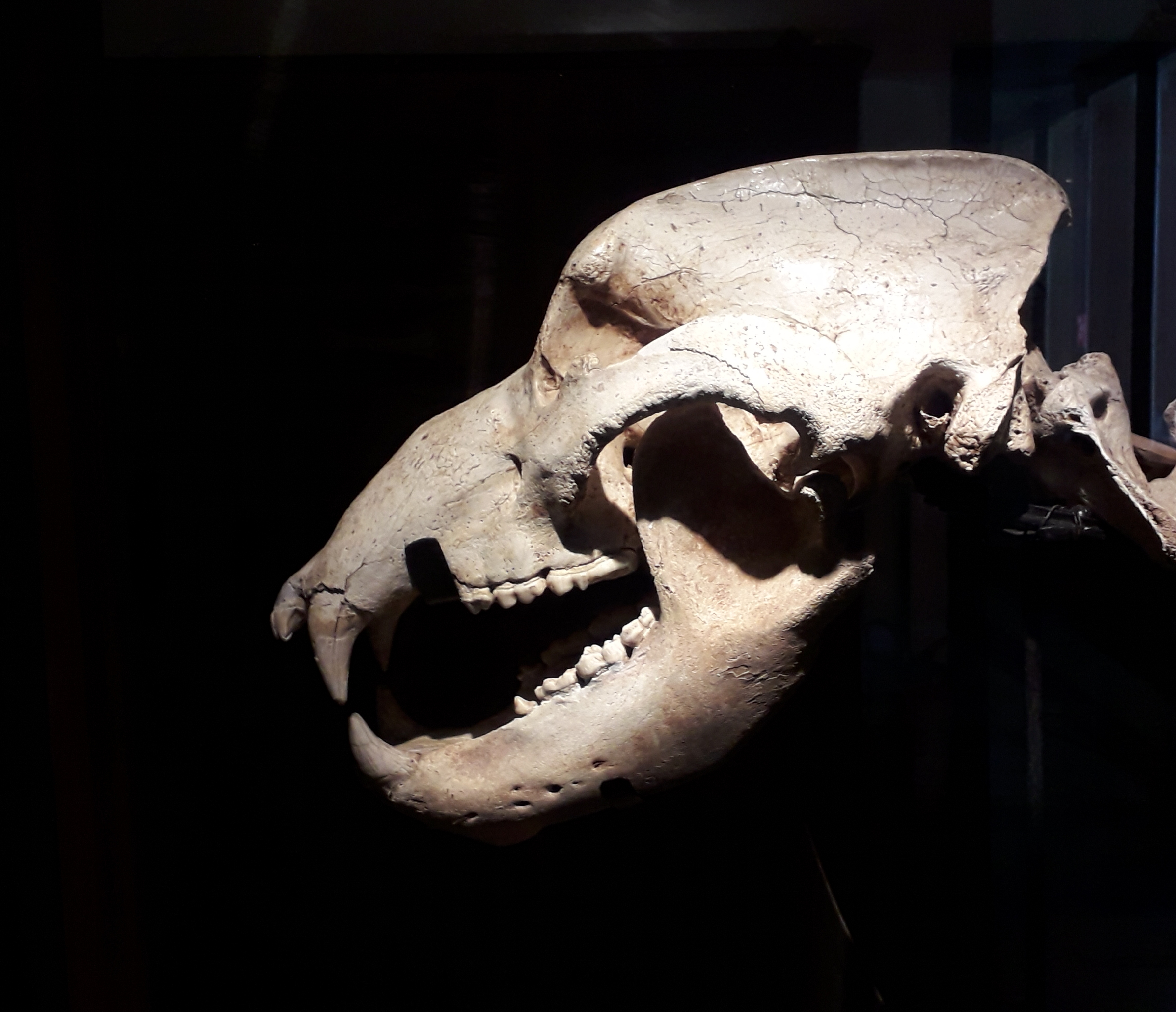
Click here to view image
Palaeolithic
Find
Skeleton bones of Ursus Spelaeus, different specimens
The animal which can be seen in the first room of the museum was reconstructed with bones found in the Caverna del Pastore (Shepherd Cave) in Toirano, Savona; many other examples are documented in the displays and come from various caves around Liguria, such as the Caverna delle Fate (Fairy Cave), Savona. It became extinct in Europe at the end of the Ice Age and in Italy it was mainly found in Liguria, Veneto and Trentino-Alto Adige.
The cave bear was taller than the modern brown bear and standing on its hind legs it could reach up to 3.5 metres in height. It had long teeth and sharp claws.
These animals sheltered in the caves during hibernation and there some would die or be hunted by the groups of Neanderthals who frequented the same caves, and who left their stone tools there, as shown by finds from the Caverna delle Fate. The hunting of cave bears provided large quantities of meat, as well as fur, tendons and fat: marks left by stone tools used by the Neanderthals to butcher the animals have been found on the bones of bears found in the Grotta Fumane (Fumane Cave), in the province of Verona.
In the Toirano caves, remains of the bears and traces such as footprints and scratches can still be seen today.




